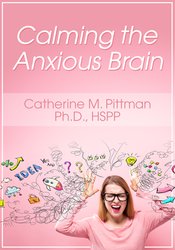

The past decade has brought new understanding about the neuroscience behind anxiety and fear. But how many of us can communicate this knowledge to clients in a clear, engaging way that actually enhances effective treatment?
You don’t need to be a brain scientist to tap into the power of neuroplasticity and revolutionize your approach to treating anxiety. This workshop recording will explore brain-based techniques to stop the symptoms of anxiety, including panic attacks, rumination, and nausea.
| File type | File name | Number of pages | |
|---|---|---|---|
| Manual - Calming the Anxious Brain (3.1 MB) | 34 Pages | Available after Purchase |

Catherine Pittman, PhD, HSPP, is a professor of psychology at Saint Mary’s College, Notre Dame, Indiana. Dr. Pittman is the author of the popular books Rewire the Anxious Brain: How to Use the Neuroscience of Fear to End Anxiety, Panic, and Worry (New Harbinger Publications) and Taming Your Amygdala (PESI Publishing & Media). She has a background in cognitive behavioral therapy, neuropsychology, fear-conditioning research, and has treated anxiety-based disorders in clinical practice for over 25 years.
Dr. Pittman’s experience makes her uniquely qualified to provide a clear understanding of neuroscience and how that informs the selection and application of successful anxiety treatment strategies. She is recognized for her clear, accessible explanations of the role of the amygdala, and her approaches to lifestyle change and cognitive restructuring that help motivate clients to be more engaged and motivated in therapy. Dr. Pittman regularly presents workshops at national conferences and webinars on anxiety treatment and is an active member of the public education committee of the Anxiety and Depression Association of America.
Speaker Disclosures:
Financial: Dr. Catherine Pittman has employment relationships with Saint Mary's College and Renew Counseling. She receives royalties as a published author. Dr. Pittman receives a speaking honorarium, recording, and book royalties from Psychotherapy Networker and PESI, Inc. She has no relevant financial relationships with ineligible organizations.
Non-financial: Dr. Catherine Pittman is a member of the Anxiety and Depression Association of America.
Introduction
Using Neuroscience in the Treatment of Anxiety
Understanding Anxiety in the Brain: The Amygdala Pathway
Understanding Anxiety in the Brain: The Cortex Pathway
Please wait ...